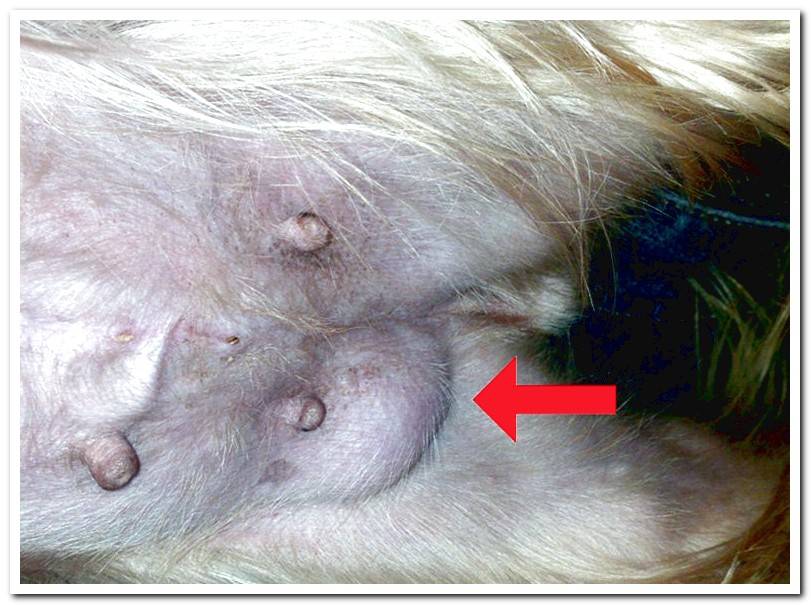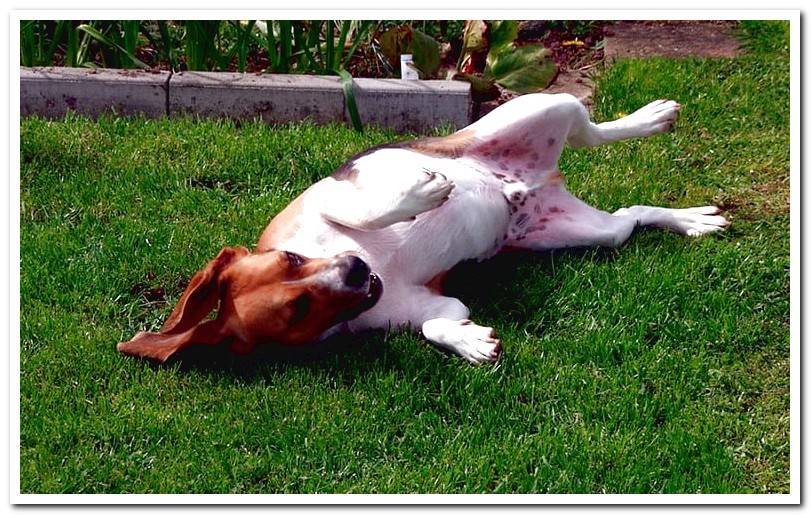
Hernias are protrusions that can occur in different parts of the body. In dogs, umbilical hernia is relatively frequent and well-known, but we can also find inguinal or perineal hernias.
Next we will talk about inguinal hernias. What are its characteristics, what problems can our dog cause, what treatment is the most appropriate and why should we go to the vet.
- You may also like: My dog has a bulge in the navel
Index of contents
- 1 What is an inguinal hernia?
- 2 What are the symptoms of inguinal hernias?
- 3 How is an inguinal hernia diagnosed?
- 4 Can inguinal hernias be prevented?
- 5 Which dogs have inguinal hernias?
- 6 What is the danger of inguinal hernias?
- 6.1 Inguinal hernia in bitches
- 7 Treatment for an inguinal hernia
What is an inguinal hernia?
We know with the name of inguinal hernia that which is located in the groin. For its part, the hernia is a protrusion of fat or intestine through an opening that remains in the abdominal wall and that should have closed during development.
Dogs may already be born with a hernia, especially in the groin or navel, but we will not always detect it. So it is not uncommon for the diagnosis to come when the dog is already an adult.
What are the symptoms of inguinal hernias?
In principle, the hernia does not have to trigger any symptoms. Externally we see it as a bulge, smaller or larger. Sometimes we don’t see it but we can feel it. On the other hand, when the hernia is complicated we may see symptoms such as the following:
- Vomiting
- Loss of appetite
- Increased urine output.
- Fever.
- Apathy.
- Pain, which may indicate that the hernia is strangling, which is an emergency.

How is an inguinal hernia diagnosed?
In general, hernias are diagnosed by observing a rounded bulge in risk areas, in this case, in the groin. The palpation that the vet performs will give you information about the characteristics of the hernia.
In cases where there are complications or are going to operate, it is possible to do an ultrasound, in addition to an analytical test to provide us with information about the general condition of the dog.
Can inguinal hernias be prevented?
The truth is that this type of hernias tend to be hereditary That is why it is easy for several cases to occur in the same family. We cannot do anything to alter a genetic predisposition, which is what prevents the closure of the abdominal wall, but we can avoid breeding with animals affected by these hernias.
Acquired inguinal hernias are those with which the animal is not born and arise after vital circumstances such as pregnancy, stroke, or obesity. These cases are avoidable by sterilizing, controlling diet and exercise or by providing a safe environment.
Bandages in the area and other home remedies that circulate through the network do not prevent, in any case, the appearance of hernias or serve to treat them. On the contrary, these types of remedies could even be counterproductive.
Which dogs have inguinal hernias?
We can find this type of hernias in any dog, regardless of its size. But it has been pointed out that some races have a greater propensity to suffer them, As the Pekingese, the Cocker spaniel or the Border collie. In the same way, females suffer these hernias in a higher percentage.

What is the danger of inguinal hernias?
A portion of the intestine may be contained in a hernia. These cases can be a cause of intestinal obstructions. Another complication of hernias is that they strangle. This means that there is a cut in the blood supply to its contents, which can cause serious damage.
If we locate a hernia in our dog, we can try to introduce it by pressing a finger inside the body. Of course, delicately and stopping if the dog shows discomfort. If we succeed we are facing a reducible hernia. Otherwise, irreducible hernias are the most at risk of strangulation.
Furthermore, small, reducible hernias that do not appear to be serious may suddenly be enlarged or even strangled if another factor such as obesity or trauma is involved.
Inguinal hernia in bitches
A female dog with an inguinal hernia has more risks than a male. For starters, your uterus may be trapped inside the hernia. Since in some cases the hernia is not perceived until adulthood, an unsterilized female is at risk.
If pregnant, during pregnancy or delivery the uterus runs the risk of being imprisoned in the hernia. Uterine pathologies are also another factor that can end the trapped uterus.
Treatment for an inguinal hernia
Surgery is recommended and is the treatment of choice for females. In males, if the hernia is small and reducible, the vet may schedule a follow-up before deciding on the operation, since the hernia may close on its own.
The operation is performed through an abdominal incision. The vet repositions the organs and sutures the damaged abdominal wall. This surgery is complicated if an internal injury has occurred, since it would have to be repaired before it could be closed. The prognosis will depend on the severity of this type of complications but, in general, it is usually good.
